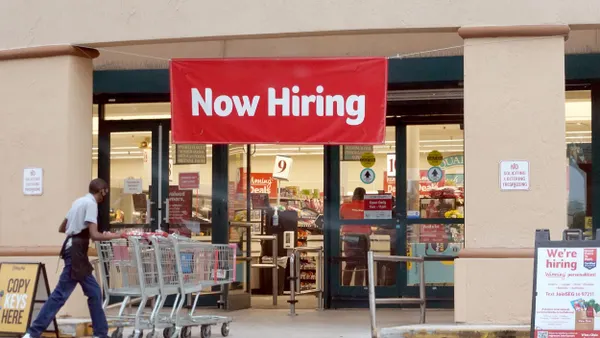Dive Brief:
- Almost half of employees (46%) in Eagle Hill Consulting’s 2023 Workforce Burnout Survey are suffering from burnout, yet more than one-third (39%) said they haven’t taken a vacation in 12 months, with the highest rates among lower income employees (59%) and younger employees (43%).
- Of 1,001 U.S. employees surveyed in February, 45% said their biggest impediment to taking a fully unplugged vacation was the expense; 33% said it was because of self-imposed pressure to stay on top of the job. A heavy workload (29%) and no colleagues available to cover the workload (29%) were the next common reasons for not taking a vacation.
- Even those who took time off didn’t always fully unplug. More than a quarter (27%) said they still check work email and messages. “It’s not just employees who benefit from taking a break. Employers that encourage employees to take time off from work are far more likely to have an engaged workforce at its full peak,” Melissa Jezior, Eagle Hill’s president and CEO said in a press release.
Dive Insight:
Burnout remains high, but it’s trending downward since the height of the COVID-19 pandemic, Eagle Hill noted in a related release. Burnout has fallen slightly since last year (49% in August 2022) and more substantially since August 2020 (58%), the firm’s research found.
Unfortunately, vacations seem to provide only temporary relief, studies consistently show. For various reasons, workers may feel compelled to stay plugged in. Whether it’s because they’re stressed out about catching up when they return to work, as a 2021 Visier survey found, or they’re concerned about how taking time off would affect their career advancement, as workers relayed to Fishbowl in a 2022 survey. To get employees to unplug, the culture has to be set from the top, Jezior told HR Dive in an email.
“That means executives and managers should regularly take time off and unplug from work,” Jezior said. “When employees see leaders taking vacation without constantly sending emails and logging into meetings, they’ll likely feel comfortable doing the same.”
One example is global tech company HubSpot, whose leaders encourage employees to use vacation by “leading from the front,” Eimear Marrinan, its director of culture, told HR Dive last year. HubSpot provides employees with a dedicated week off, known as the Global Week of Rest. Immediately after last year’s week of rest, the company’s CEO took a couple of weeks off to travel. Her openness about the trip was a way to normalize vacation use from the top, Marrinan said.
Because business continues during the dedicated week off, Marrinan said HubSpot keeps a skeleton crew available for customer emergencies and queries. It also prioritizes workforce planning to make sure employees don’t overwhelm themselves with work the week before and after the rest week.
Employers have another reason to help employees totally unplug during their time off: Working on vacation seems to increase the likelihood of a post-vacation quit, a 2022 Visier survey found. Nearly half (44%) of the workers surveyed said they think about quitting while on vacation; those who stayed “very connected” to the job during their time off were 36% more likely to actually quit.
Besides leaders setting an example themselves, there are several other ways employers can help workers unplug while on vacation, Jezior said. For example, they can send employees regular emails with vacation balances; encourage staff to set “out of the office” emails specifically stating they aren’t checking emails with a contact point for urgent matters; and provide employees with the benefits of taking time off.
“Managers play a critical role,” Jezior added. “They can have conversations with their direct reports about the importance of vacation [and work] through any vacation impediments like staff shortages.” Managers also can help employees manage their workload to make sure they feel comfortable stepping away, Jezior said.













